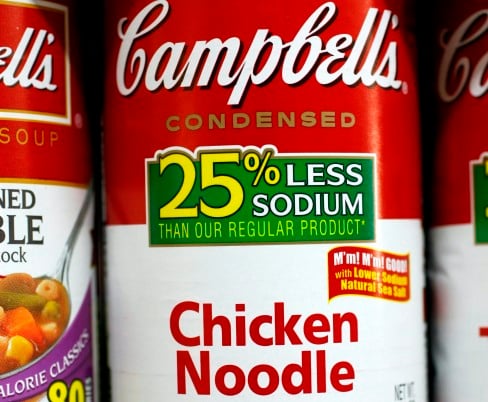Because financial products generally are sold and not bought, financial services companies traditionally have been great sales machines and lousy marketers.
Because financial products generally are sold and not bought, financial services companies traditionally have been great sales machines and lousy marketers.
Compare that to consumer goods giants like Procter & Gamble or Pepsico, where brand managers are kings and salespeople are the nameless foot soldiers who labor behind the scenes calling on supermarkets.
But since good ideas travel, financial services companies eventually adapt the best of consumer goods marketing. It took 40 years, but using a funny cartoon animal to push a product (think Tony the Tiger for Kellogg's Frosted Flakes) finally made it to insurance — the Aflac duck.
If Campbell's Soup is any indication, the next big step in financial product marketing could very well be ‘neuromarketing.”
Readers of Wednesday's Wall Street Journal may have noted a story about how Campbell's has repackaged some of its soups based on the results of neurological and biometric tests given to consumers. It seems that shoppers react viscerally and almost instantly to the pictures, logos and type faces on consumer goods packages, which means they make buying decisions on emotion first and then, a few fractions of a second later, think out a rational explanation for their purchase.
For its cream of potato soup, Campbell's moved its distinctive white-on-red logo from the top of the package to the bottom so as not to distract attention from the soup itself, which was moved to the center of the package and put in a less formal bowl. Campbell's added a wisp of steam to the photo to suggest warmth, which was found to engage customers emotionally, and removed the spoon holding the soup, which people thought was unnecessary and evoked little emotional response.
The proof will be in the pudding — or in this case, the soup. And once cream of potato soup sales start sizzling, or even rise by 1% or 2%, this neuromarketing stuff is really going to catch on. Just imagine what could happen when mutual fund marketers follow Campbell's lead.
First, fund ads featuring whales jumping out of oceans, sailing ships making their way through hurricanes and turquoise seas lapping idyllic beaches will be out. Research will prove that all those water images subliminally signal to the 50+ year-old target audience that it's time for a trip to the bathroom.
Second, research will show that while consumers like to look at attractive people in ads, looking at attractive, amazingly well-preserved wealthy people having a great time and gloating over the performance of their investments is downright annoying. Investors want to feel they've done better than the other schlubs out there in investment land, not that they don't measure up.
Finally, mutual fund companies will realize that they have to change the names of their funds. The XYZ Growth Series D fund has about as much emotional appeal as a case of off-brand sardines. How about something powerful and meaningless from the auto business, like the XKJ Fund? Or maybe using a licensed household name, like the Beyonce Fund? Or something homey, like the Paula Deen Biscuits Fund?
What does all this have to do with rational investing? Nothing. But c'mon, who ever said investing was rational?







